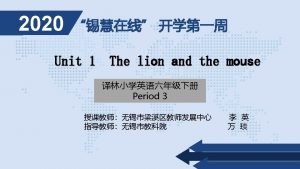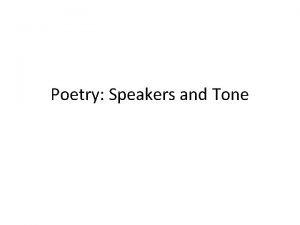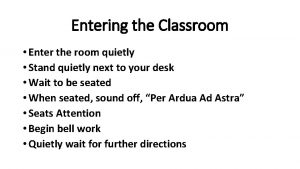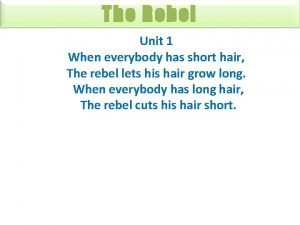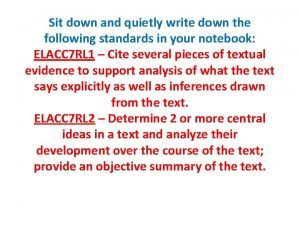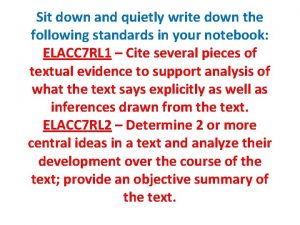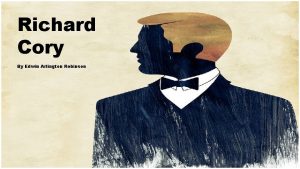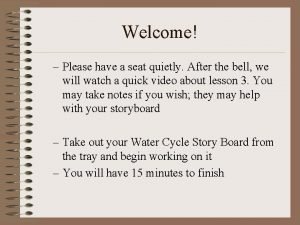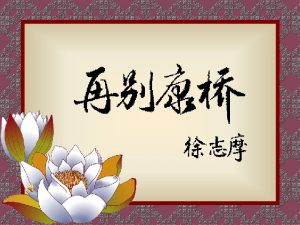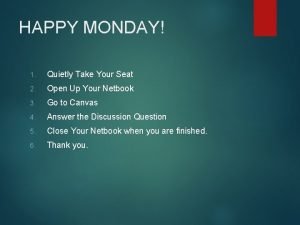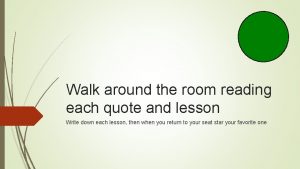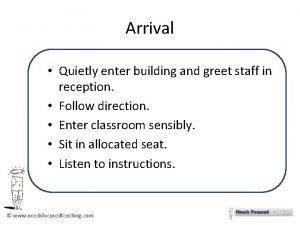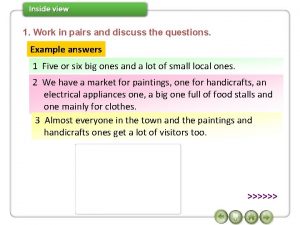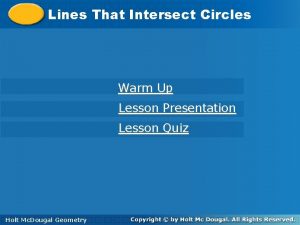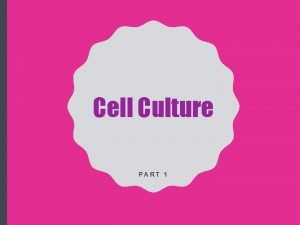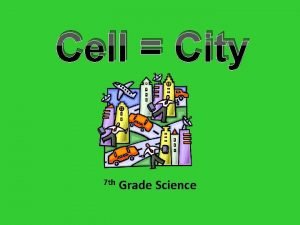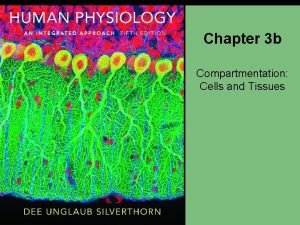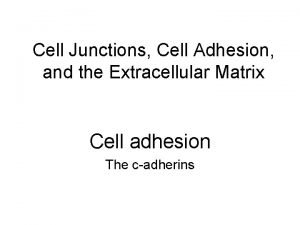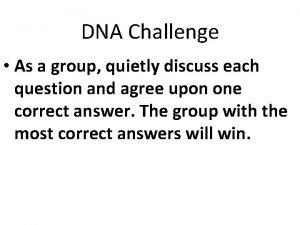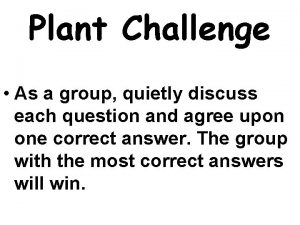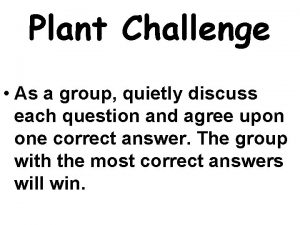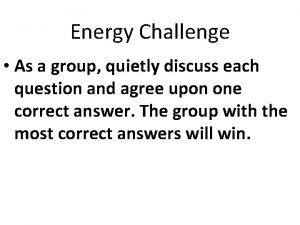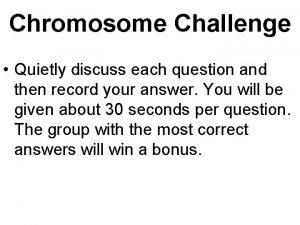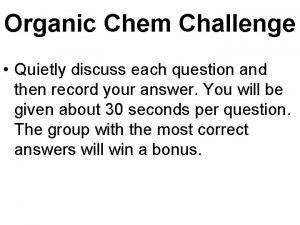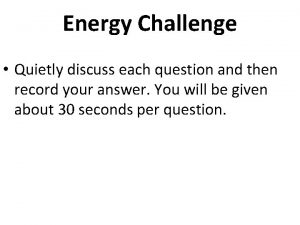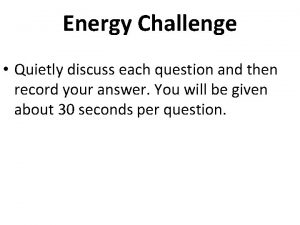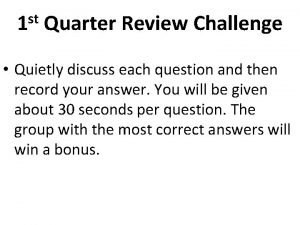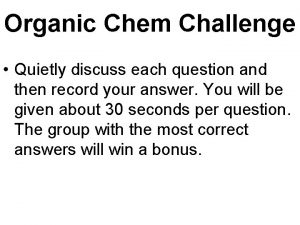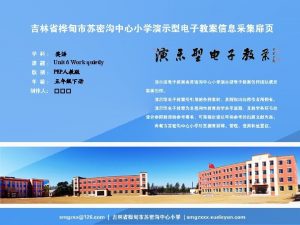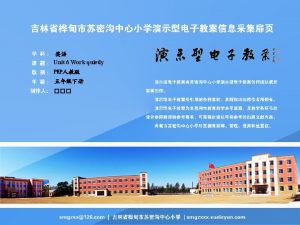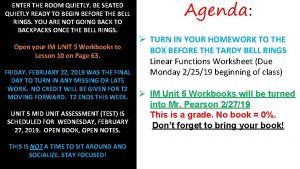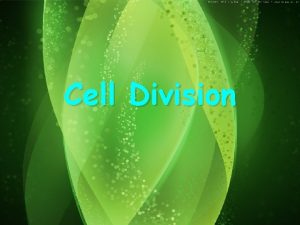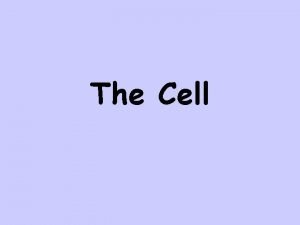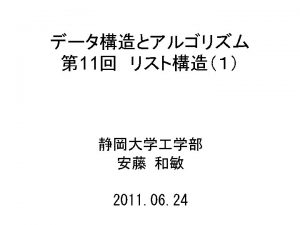Cell Challenge As a group quietly discuss each











































- Slides: 43

Cell Challenge • As a group, quietly discuss each question and agree upon one correct answer. The group with the most correct answers will win extra credit.

1) Who first observed cells when he examined cork underneath an early microscope?

2) Which organisms are the only living prokaryotes?

3) Name two functions of the lysosome.

4) What usually determines the shape of a cell?

5) Who was one of the first people to describe LIVING cells?

6) Which organelle transports ribosomes/proteins (before going to the Golgi body)?

7) Name two organelles that plant cells have and animal cells don’t.

8) Identify this organelle.

9) Identify this organelle.

10) Besides the chloroplast, which other organelle is thought to have evolved according to theory of endosymbiosis?

11) What are cells called that have a nucleus?

12) Identify these organelles (green spheres).

13) a. Identify this organelle. b. What is the function?

14) Name three basic parts that compose a phospholipid.

15) Name the sac, proteins are placed within by the Golgi Body before being shipped away.

16)Which organelle is created by the nucleolus?

17) Which organelle stores water and waste within cells?

18) What type of receptor is shown below?

19) Which organelle produces the molecule ATP (energy) that is required by all cells?

20) Place the steps of protein creation in the order from start to finish. Step A Ribosomes attach and travel along the rough ER Step B Nucleolus creates the ribosome Step D Vesicle protects the protein and releases it from the cell Step C Protein created by the ribosome is passed to the Golgi body Step E Ribosomes exit the nucleus


1) Who first observed cells when he examined cork underneath an early microscope?

2) Which organisms are the only living prokaryotes?

3) Name two functions of the lysosome.

4) What usually determines the shape of a cell?

5) Who was one of the first people to describe LIVING cells?

6) Which organelle transports ribosomes/proteins (before going to the Golgi body)?

7) Name two organelles that plant cells have and animal cells don’t.

8) Identify this organelle.

9) Identify this organelle.

10) Besides the chloroplast, which other organelle is thought to have evolved according to theory of endosymbiosis?

11) What are cells called that have a nucleus?

12) Identify these organelles.

13) Identify this organelle.

14) Name three basic parts that compose a phospholipid.

15) Name the sac, proteins are placed within by the Golgi Body before being shipped away.

16)Which organelle is created by the nucleolus?

17) Which organelle stores water and waste within cells?

18) What type of receptor is shown below?

19) Which organelle produces the molecule ATP (energy) that is required by all cells?

20) Place the steps of protein creation in the order from start to finish. Step B Step E Nucleolus Ribosomes Step A creates the Ribosomes exit the ribosome attach and nucleus travel along the rough ER Step C Protein created by the ribosome is passed to the Golgi body Step D Vesicle protects the protein and releases it from the cell

1. Describe the two types of receptors found in cells. 2. Name the types of passive and active transport. Describe each type.
 Amateurs discuss tactics professionals discuss logistics
Amateurs discuss tactics professionals discuss logistics Teen challenge nottingham
Teen challenge nottingham Quietly happy meaning
Quietly happy meaning Quietly adverb sentence
Quietly adverb sentence Speaker of a poem
Speaker of a poem She entered into the room quietly
She entered into the room quietly If we sneak out quietly nobody notice
If we sneak out quietly nobody notice What does the rebel wear when everyone wears uniform?
What does the rebel wear when everyone wears uniform? Sit down quietly
Sit down quietly Sit down quietly
Sit down quietly Richard cory figurative language
Richard cory figurative language Enter quietly
Enter quietly Solute solvent
Solute solvent Leave quietly
Leave quietly Subordinating conjunctions awubis
Subordinating conjunctions awubis Il capitano
Il capitano Walk around the room
Walk around the room Enter quietly
Enter quietly Work in pairs. discuss these questions
Work in pairs. discuss these questions In pairs or groups discuss the questions how do children
In pairs or groups discuss the questions how do children 7-3 more multiplication properties of exponents
7-3 more multiplication properties of exponents Identify each line or segment that intersects each circle
Identify each line or segment that intersects each circle Draw and label parts of an egg
Draw and label parts of an egg Volvox diagram
Volvox diagram Denuding tower
Denuding tower Site:slidetodoc.com
Site:slidetodoc.com Linear chromosomes in eukaryotes
Linear chromosomes in eukaryotes Animal and plant cell venn diagram
Animal and plant cell venn diagram Concentration cell
Concentration cell Dry cell vs wet cell
Dry cell vs wet cell Comparing animal and plant cells venn diagram
Comparing animal and plant cells venn diagram What is the function of a cell
What is the function of a cell Vacuole function
Vacuole function K+ pump
K+ pump Cell wall vs cell membrane
Cell wall vs cell membrane Cell line vs cell strain
Cell line vs cell strain Cell line vs cell strain
Cell line vs cell strain Cell city project animal cell
Cell city project animal cell Primary voltaic cell
Primary voltaic cell Difference between plant and animal cell
Difference between plant and animal cell Cell-cell junction
Cell-cell junction Cell-cell junction
Cell-cell junction Which organelle prepares proteins for specific jobs
Which organelle prepares proteins for specific jobs Events of the cell cycle
Events of the cell cycle


